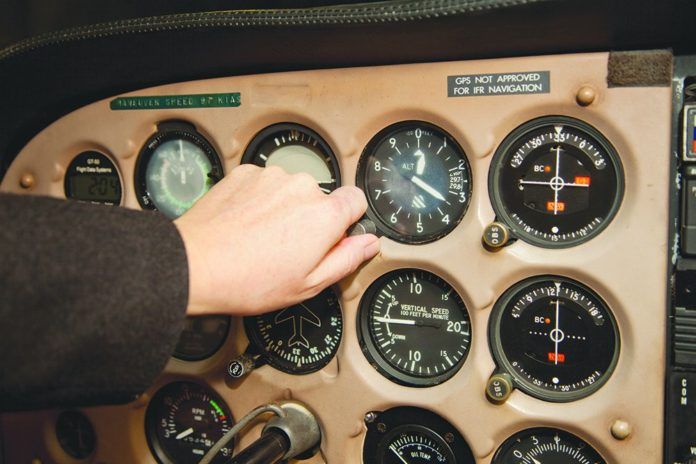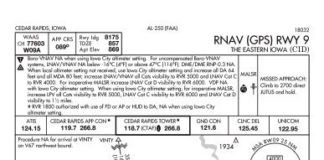How Does That Work Again?
Adam Wright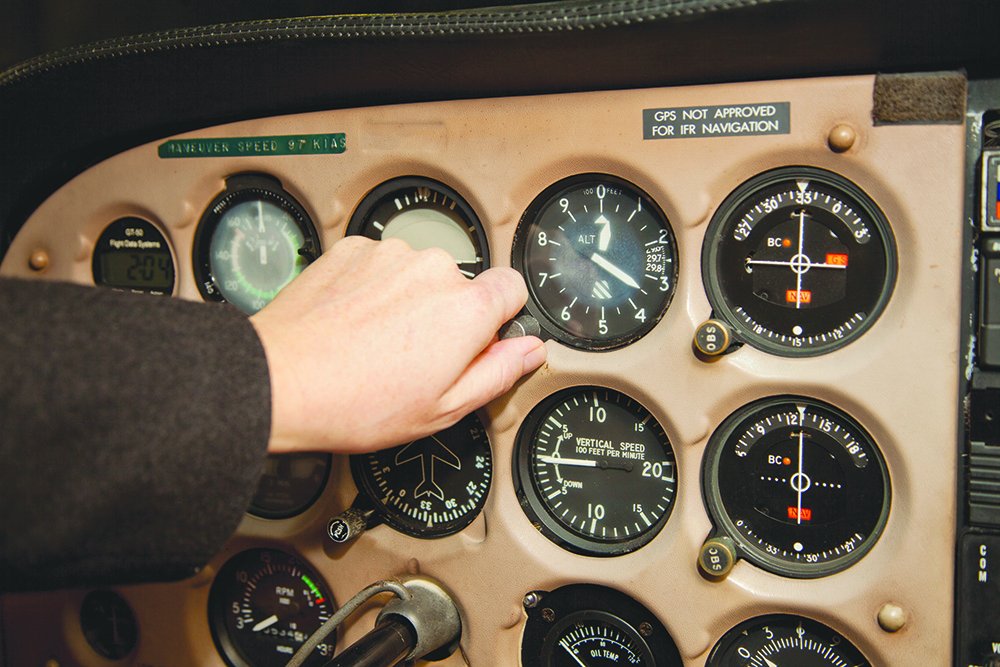
Could you write an article on altimetry? The whole pressure setting and adjusting it is confusing. I know 29.92 is the reference datum. But, when I set the local pressure at my airport, for example 30.92, I get field elevation. So is local pressure 30.92 and now it indicates field elevation or is 30.92 the pressure at sea level?
When I turn the altimeter setting down (decreasing numbers in the Kollsman window) altitude decreases on the altimeter. Why is that? You see, it’s all kind of confusing.
Marek Javorek
Chicago, IL
Basic altimetry is well covered in various texts, but some aspects can be confusing. There’s not enough material for a full article, but here are a few basics.
Assume a standard day with stable temperature and pressure. The pressure will be 29.92 inches of mercury at sea level. At an airport 1000 feet above sea level, with less atmosphere above to create the pressure, the pressure will be an inch lower at 28.92. An altimeter is nothing but a pressure meter, like a barometer, but is calibrated not in pressure units but in distance. We want our altimeters to read the actual elevation, so at that airport we want the altimeter to read 1000 feet.
The actual air pressure, or barometric pressure, constantly changes as a factor of atmospheric conditions. So, in reality, that pressure at sea level might not be exactly 29.92. In fact, it could be, say, 29.72. If we kept our altimeters calibrated to 29.92, on this day where the sea level pressure is actually 29.72, or 0.2 lower pressure, the altimeter would read 200 feet above sea level. That wouldn’t be good because we might think we were still 200 feet up when, in fact, we’d be about to hit the ground.
To fix this, the local altimeter setting is reported. On this day, it would report 29.72. If you adjusted your altimeter to 29.72, it would read zero at sea level. All is once again, good.
Back to the standard day, 29.92 at sea level, and back to the airport at 1000-foot elevation. The actual pressure at the airport is, of course, one inch lower, at 28.92, due to the 1000 feet of elevation. But, if we set our altimeter to 28.92 on the ground at the airport, it would read zero. (See George Shanks’ article, “Altitude vs. Height” in the September 2014 issue.) We normally want the altimeter to read airport elevation, 1000 feet, so we set it to the sea-level-equivalent pressure of 29.92.
Airport altimeter settings are derived from the actual pressure measured at the airport, then adjusted for the known, surveyed elevation, to give us that “sea-level equivalent” pressure. Thus, when you set your altimeter with that reading, you’ll get airport elevation on the ground at that airport.
If the topic is still confusing, you might want to engage your instructor for a more detailed discussion.
ODP Speed Restriction
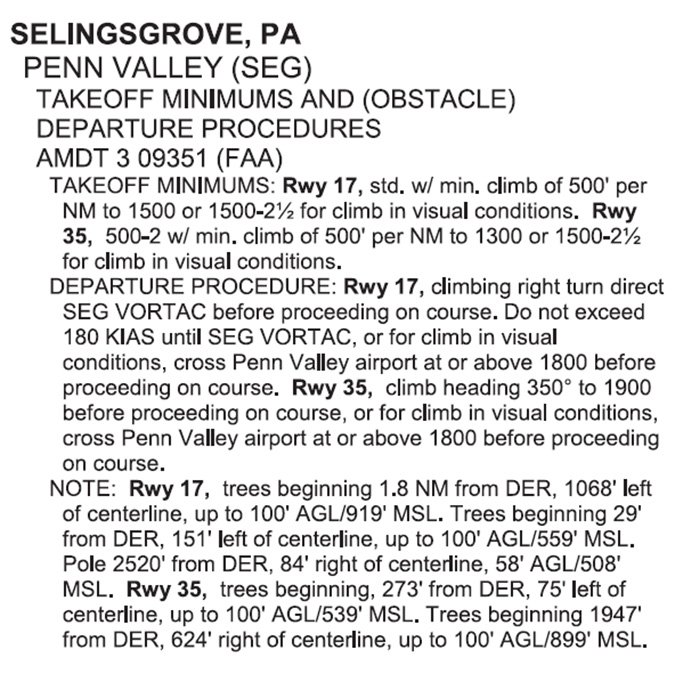
I was reading the February, 2016 issue of IFR in which a reader from Selinsgrove, PA (KSEG) wrote and I was reminded of a curious line in the SEG Departure Procedure for Runway 17. It reads “Do not exceed 180 KIAS until SEG VORTAC…” Not that this restriction matters to me in my humble Cherokee, but I have never been able to figure out what aspect of obstacle avoidance would necessitate restricting one’s speed. Any ideas why this is in the procedure?
Frank Arrison
Doylestown, PA
Lee Smith, our resident TERPSter, replies:
To my knowledge, the only reason that a speed restriction would be used on an ODP is to reduce the turn radius. Since this procedure has a defined route, that’s probably what’s happening here. The standard outer boundary turn radius is based on 250kts and a 4.2nm turn radius. With a 180kt speed restriction, an outer boundary turn radius of 2.5nm could be used. Apparently that’s what was needed to make the route avoid an obstacle somewhere along the route.
VFR Only
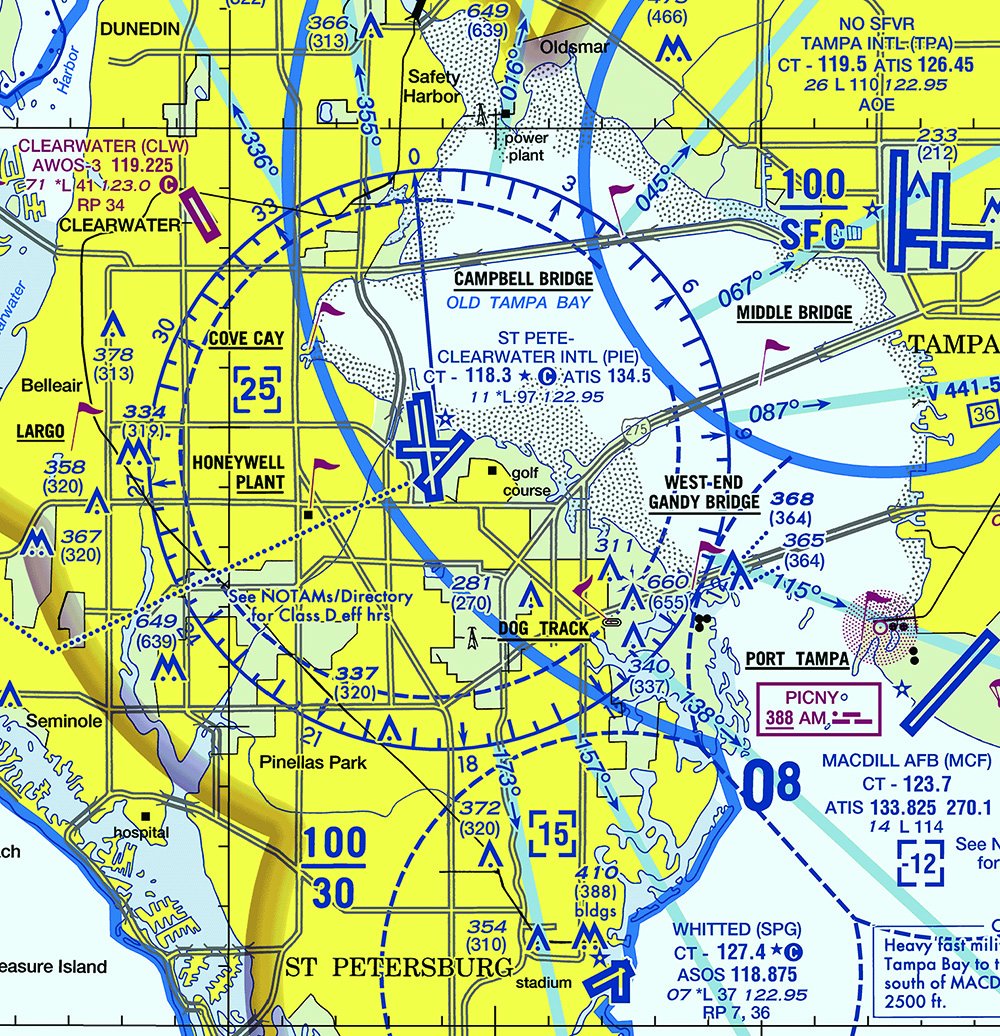
The following took place in NYC’s airspace. The location has been changed at the request of the pilots but the scenario is the same.
Few light helicopters are IFR legal. Even though they possess all of the instruments for IFR flight, they are not type-certificated for IFR. The helicopter was trying to make it back to its home base of PIE (Class D). Weather was OVC007 2SM. The PIE tower refused SVFR because the adjacent Class D airport (SPG) had a line of arrivals. The helicopter was given an indefinite EFC time. The helicopter pilots landed at a non-tower airport immediately outside the Class D (CLW).
They then filed an IFR flight plan from CLW to PIE (direct routing) with an altitude that would obviously put them in the clouds. They called on the ground for their clearance and were cleared into controlled airspace. The departure immediately put them into the Class D. Upon departing CLW, they were too low to contact Tampa Approach. Instead they switched to PIE tower. (PIE’s airspace had already been blocked off because of their IFR departure.) The pilots told PIE tower, “We are unable to reach Tampa approach, but we have [PIE] field in sight, we’d like to cancel IFR.” PIE tower instructed them, “IFR cancellation received, cleared to land.”
As far as I can tell, everything was perfectly legal. My only uncertainty is the wording in the type certificate, which I believe allows day/night VFR flight only.
Robert “Bootcamp” Schapiro
New York, NY
Their destination, PIE as you’ve cast it, was below VMC, right? (OVC007 2SM)
To determine the legality of what they did, one would have to carefully look at the type certificate (TC). Regardless of their ability to actually see the airport, they were flying under IFR in weather below VMC. If the TC restricts IFR flight, they’re busted. If the TC restricted flight in less than VMC or specifies VFR only, they’re busted. Only if the restriction in the TC lists explicit weather restrictions that permitted flight in OVC007 2SM would they be OK. Since you suggest that the TC is VFR only, well, they’re busted. Both of ’em should file ASRS reports.
Also note that their initial attempt to use SVFR probably is similarly contrary to the TC. However, if the TC merely prohibits flight under IFR (not mentioning actual weather conditions), then SVFR would be OK. If the TC says VFR only, well, again they’re likely busted flying in SVFR because they’re not under VFR.
The pilots should ask themselves how they would have proceeded had there been an FAA inspector aboard. That should be their final answer.
As for staying IFR current in a VFR-only aircraft, that’s easy. Never actually file IFR. “We’d like to practice a couple approaches while remaining VFR.” The controller will treat you as IFR traffic, give you all the vectors and approach clearances you need, but you’ve never flown under instrument flight rules.
We read ‘em all and try to answer most e-mail, but it can take a month or more. Please be sure to include your full name and location. Contact us at [email protected].

